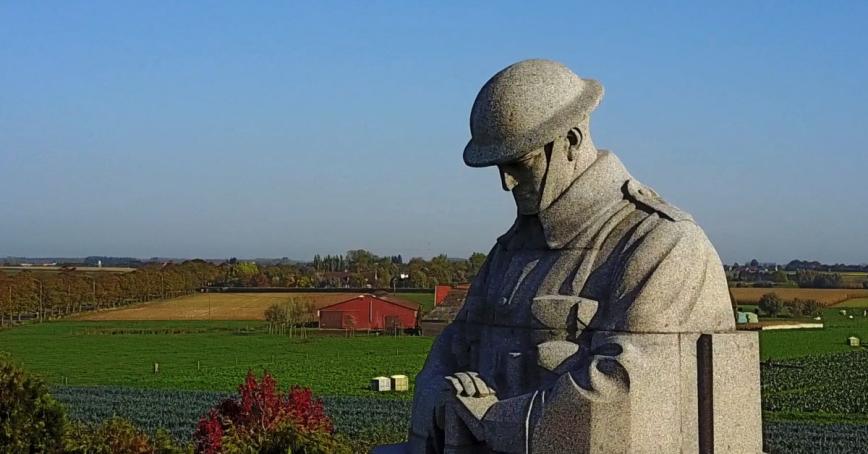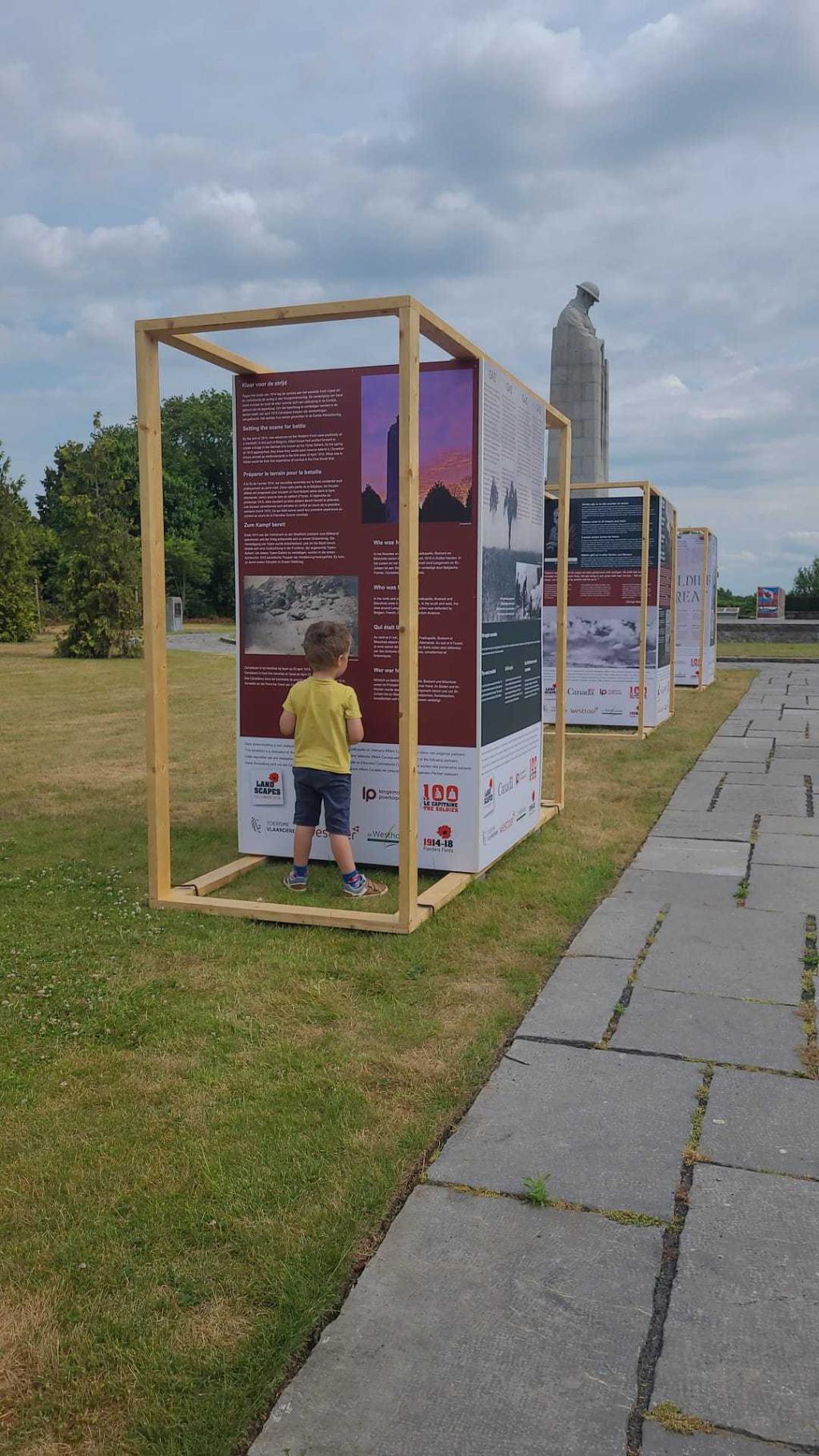Memories and mourning are written in stone in RRU professor’s film

Geoffrey Bird has made a short film about a powerful national memorial that few Canadians know much about, but has an important place in our shared First World War history.
A professor in the School of Communication and Culture at Royal Roads University, Bird produced and directed the seven-minute short about the St. Julien Canadian Memorial, also known as The Brooding Soldier, for a Veterans Affairs Canada project in Belgium that on July 8, 2023 will observe the one hundredth anniversary of its unveiling.
Standing eleven metres tall, the square, monolithic column leads to a sculpture that represents a Canadian soldier, helmeted head bowed, hands resting on the stock of a rifle, barrel down, in a symbolic mark of respect commonly seen at occasions of mourning and commemoration. The memorial marks the area where the first battle of the Canadian Expeditionary Force took place in April 1915, during First World War. Known as the Second Battle of Ypres, April 22 also marked an infamous first, Bird says: the use of poison gas as a weapon.
The Brooding Soldier monument, showing a soldier contemplative, in mourning, was created by war veteran and architect Frederick Clemesha after a Canadian national design competition in 1920.

“It is a powerful memorial,” Bird says. “It marks ground where Canadians fought for the first time and resulted in 6,000 casualties killed or wounded over four days…It is an important moment in Canada’s story. The memorial stands as a gateway to the past, an opportunity to ask ‘What happened here? And why is this place important today?’
“Memorials are given the task of holding the memory for future generations. The sculptor is given the task of conveying some kind of meaning,” he says. “There are memorials that depict courage and bravery and soldiers defending, and then there are those convey soldiers in reflection and grieving over their fallen comrades,” says Bird.
“When we are looking at the First World War — a time when there’s not very much film, there’s sometimes not a lot of photography — we look to memorials and art and often the landscape itself to give us more insight into what happened. The Brooding Soldier is powerful in that it is, from an artistic perspective, unforgettable. It calls us to learn about the service and sacrifice that occurred there.”
Bird says he hopes this film, along with others of the War Heritage Research Initiative, prompts Canadians to learn more about these places and stories.
“In the research I’ve done in places like Normandy and in Vimy and in Belgium, the experience of actually walking the battlefields, being in the cemeteries, understanding those places first-hand gives a different kind of insight and a different kind of emotional connection to these stories,” he says.
While this film has been connected to a QR code on one of the interpretive panels for the July 8 unveiling, Bird is also working on a 45-minute film in time for Remembrance Day that focuses on art, memorials and pilgrimage related to the battle.
Asked about his interest in memorials, Bird says: “As a society, we essentially try to place a memory into stone to pass from generation to generation. With our mortality, and the loss of the witnesses, we lose the person who experienced it first-hand, and we become reliant on these markers to hold the story over time…they can’t tell the story alone. There are certain events, where sacrifices are made, that are worthy for all of us to learn about and commemorate.”
Learn about Royal Roads’ War Heritage Research Initiative.
Interested in telling stories using different media? Check out RRU’s Communication and Culture programs.